Ali Darwish | Hassan Ibrahim
In three areas of control in Syria, hundreds of thousands of children are deprived of education, coinciding with teachers leaving the education sector and preferring other jobs that secure their daily needs, creating educational crises that become entrenched year after year. Despite the varying reasons across the three areas of control in Syria, the outcomes are similar.
In northeastern Syria, the Syrian Democratic Forces (SDF) control vast areas and manage them through its political arm, the Autonomous Administration of North and East Syria (AANES), imposing ideologically driven curriculums that spark strikes and conflicts between the population and educational bodies each year.
In parts of northwestern Syria, under opposition control and managed by de facto governments, the decline in support and the economic crisis impact both the educational staff and the educational process as a whole, paving the way for the privatization of the sector and the spread of institutions linked to military factions.
Meanwhile, in the remaining areas under the regime’s control, the educational process is managed almost the same way it has been known for decades in Syria, amid crises related to infrastructure, securing supplies, and teachers’ salaries.
Among the 5.52 million children of school age (5 to 17 years old) in Syria, 2.4 million are out of school. The number of children dropping out of education is expected to rise, exposing them to the risk of permanent dropout, as they remain outside the school for an extended period, making it difficult to compensate for the years of education lost; some children have missed ten years of schooling, according to UNICEF.
Enab Baladi presents in this report the problems faced by the education sector in various areas of control, the reasons for children’s and teachers’ departure from the educational sector, the impact of this on future generations in Syria, and the solutions that can alleviate the severity of the problem.
Decline in funding and teacher crisis
Northwestern Syria: An educational gap
5.1 million people have gathered in northwestern Syria following the displacement caused by military conflicts in central and southern Syria, including two million people living in camps, estimated to be around 1,500 organized and informal camps.
In this region, 2.2 million school-aged children reside, of which one million are out of school. Furthermore, 57% of children have no access to primary schools, and 80% have no access to secondary schools, according to the United Nations Office for the Coordination of Humanitarian Affairs (OCHA).
Over the past 13 years, the area has been subjected to bombardment by regime forces, Russia, and Iranian militias, leaving the population in a state of instability and affecting the educational process, as schools are also targeted.
The Syria Civil Defence (The White Helmets) reported in a report issued last September that military operations and systematic bombardment by regime forces and Russia have damaged thousands of schools since 2011.
Since 2019, Russia and the regime have launched 172 attacks targeting schools and educational facilities in northwestern Syria, according to the Civil Defence.
Since the outbreak of the Syrian revolution in March 2011, 7,000 schools in Syria have been either destroyed or damaged due to bombardments.
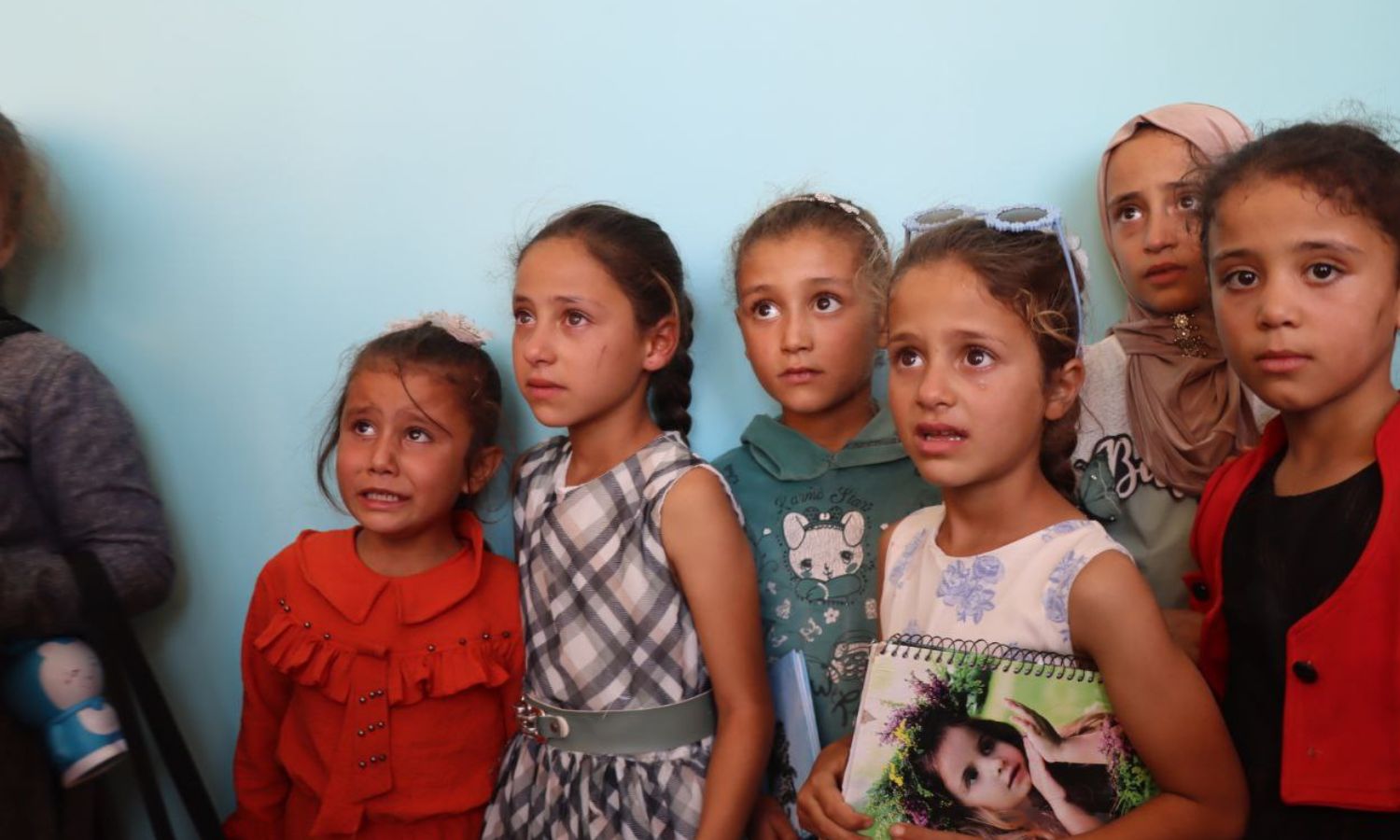
Panic and fear prevail among students at Kafr Nouran School in western Aleppo countryside following attacks by the Syrian regime on the village – September 29, 2024 (Syria Civil Defence)
Teacher dropout, What are the reasons?
In addition to the ongoing issue of children dropping out for years, the rate of teachers leaving the teaching profession has increased over the past two years, severely impacting the educational process. They are forced to turn to jobs in other sectors, such as agriculture and casual labor, seeing it as a refuge to secure their basic needs amid ongoing salary crises, according to three teachers interviewed by Enab Baladi.
The United Nations Office for the Coordination of Humanitarian Affairs (OCHA) estimated that a quarter of the teachers in Idlib do not receive salaries, amounting to 2,380 teachers out of 10,853 teachers.
The reasons for teachers leaving their positions are similar in opposition-controlled areas, whether in areas under the Syria Salvation Government (SSG) control in Idlib and parts of rural Aleppo, Latakia, and Hama, or in the Syria Interim Government (SIG) in rural Aleppo.
According to testimonies from teachers Mustafa Karkaj in rural Aleppo and Ibrahim in Idlib (both of whom left teaching), the reasons for teachers’ dropout from schools include:
- Low teacher income that cannot keep up with the significant rise in living costs, with an average salary of only $80.
- Finding job opportunities that secure higher income than that of teaching.
- Increased weekly teaching hours for teachers, where in rural Aleppo, the workload was 19 hours per week and is now between 25 and 30 hours.
Teachers in rural Aleppo organized repeated protests over the past three years demanding an increase in monthly income, as well as opposing administrative corruption in the region and the deteriorating educational process, but the problems remain unchanged.
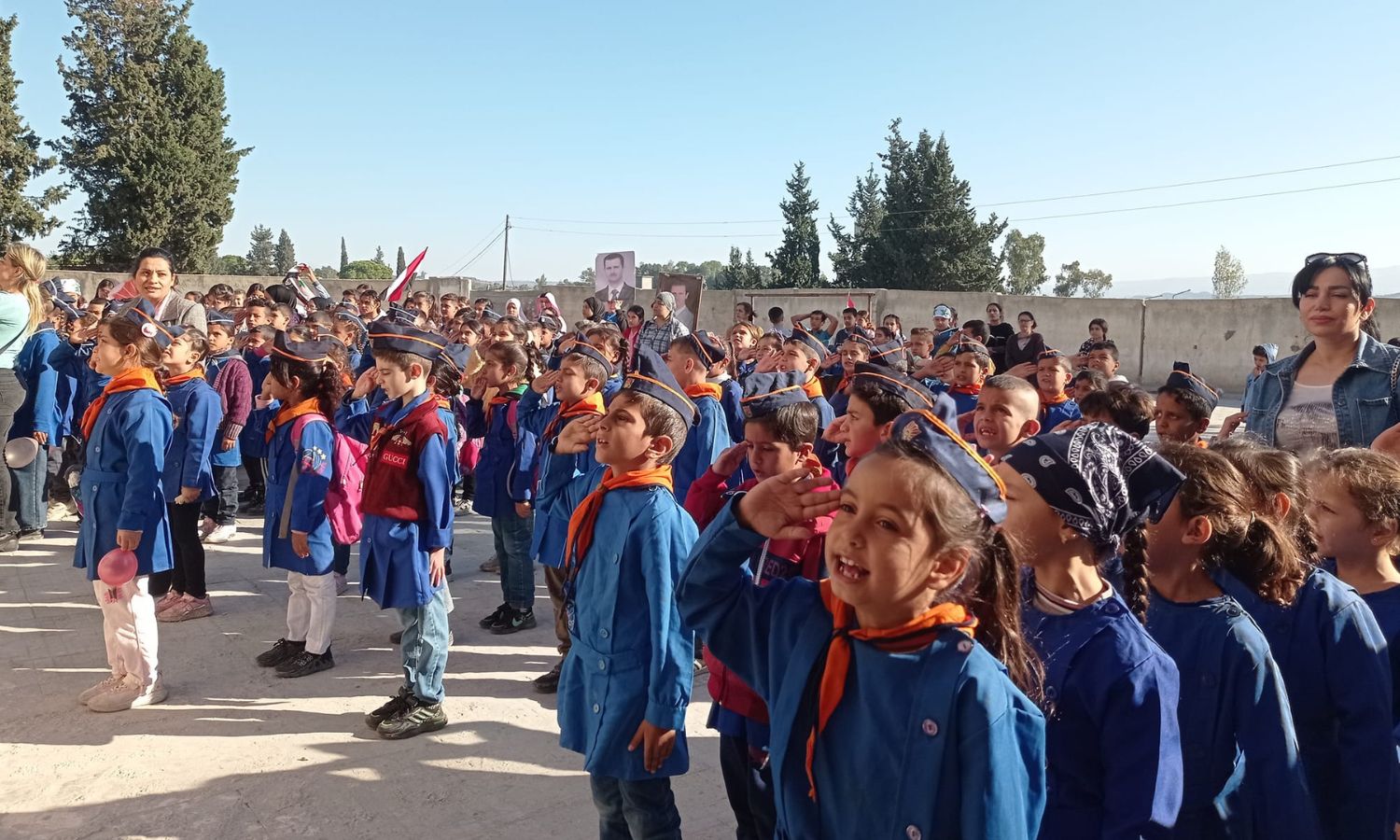
Performing the national anthem in Martyr Salim Sheikh Suleiman School in Latakia governorate – October 2024 (Latakia Education Directorate)
Privatization
The number of teachers who resigned in the areas governed by the Interim Government since 2023 until the end of February 2024 exceeded 500 teachers, according to statistics obtained by Enab Baladi from the head of the Teachers’ Syndicate in Azaz city in northern Aleppo, Muhammad Sabah Hamidi, while there are no statistics on the number of teachers resigning in Salvation Government areas.
Teachers’ resignations have caused a disaster for the educational process as a result of the shortage of staff and the lack of competencies that meet urgent needs, as there is no substitute for the resigned teacher, especially in specialized subjects like physics and chemistry; currently, reliance is on university students to cover some classes.
Some teachers are heading to private schools because they offer higher financial returns, but it is difficult for parents to enroll their children in these schools due to their high costs, especially in a region where 4.2 million out of 5.1 million people need assistance, and 3.6 million suffer from food insecurity.
Educator Hassan Tayfour explained that private education has negative impacts on both teachers and children, as it attracts distinguished and experienced teachers, affecting public education. Moreover, it does not necessarily provide significantly higher salaries than public schools, meaning teachers still need to work in other jobs.
If parents wish to enroll their children in private education, for example in rural Aleppo, a student would need a monthly fee of $35; if there are multiple children in the same family, this creates financial pressure, according to Tayfour.
Teachers interviewed by Enab Baladi warned of the trend towards privatization in education, which deprives a large number of children of quality education, making it exclusive to the affluent.
Meanwhile, teachers still working are compelled to work in more than one school to secure a better income, adversely affecting their performance and ability to deliver lessons.
Ali Hassan, a teacher in the Kuwaiti camp in Harbanoush in rural Idlib, told Enab Baladi that the financial situation for teachers has not improved, indicating that education in the coming years will not be any better than it is today.
Shortage of supplies
Schools in northern Syria are divided into those supported by organizations, those supported by the Directorate of Education (which claims to be independent), and schools that are not supported by any entity.
Schools suffer from a lack of books, weak staffing, and a significant shortage of educational logistics and financial grants in public sector schools.
Some camps lack schools, and it is more difficult for children from these camps to reach the surrounding schools due to financial costs and the unavailability of suitable transportation.
According to the Support Coordination Unit, there are 213 schools in the camps of northwestern Syria spread across 168 camps, whereas the number of camps is about 1,500, including unofficial and formal camps. There is also something known as camp clusters, which consist of several neighboring camps in a specific area.
The Director of Education in Idlib, Ahmad al-Hassan, told Enab Baladi that the need for school books this year has increased with the rising number of students estimated at around 550,000, all of whom require new books, leading to a “huge gap.”
Al-Hassan explained that part of the need for books is usually covered by memorandums of understanding with organizations when a new project is initiated, allowing space to include a specific clause for school books, as was the case last year, where a limited number was secured in collaboration with some supporting organizations.
According to OCHA, about 700 schools in Idlib lack basic support, while 100 schools have lost their support as of last July, affecting over 110,000 students and 6,500 teachers.
The earthquake that occurred on February 6, 2023, impacted the educational infrastructure in northwestern Syria, as 54% of schools and 37% of teaching and learning places were damaged, with the number of affected educational buildings reaching 822, according to a report issued by Save the Children organization on June 15, 2023.
The future doesn’t look better
According to the educational expert and director of the Medad Center for Studies, Dr. Fawaz al-Awad, there is no doubt that the continuity of the educational process in northern Syria is dependent on funding. Over the past two years, resources supporting the education sector have declined, while at the same time, the population in northwestern Syria has increased due to the arrival of families from other control areas and new births.
Every year, tens of thousands of new children join the educational process, which means that the educational process requires more funding, more opening of schools, equipment, textbooks, teacher salaries, in addition to heating and water costs.
The statistics on the ground vary according to the estimates of the groups that conduct surveys on the number of dropouts in Syria, but at least we have one-third of students out of the educational process. These are terrifying and alarming numbers, as this means that one-third of children will become illiterate without education, which creates psychological and social impacts on Syrian society, according to Dr. Fawaz al-Awad.
Al-Awad added to Enab Baladi that the fundamental pillar for the cohesion, civilization, and building of any society’s future rests on having an educational process that ensures the inclusion of all children without exception. When society loses a segment of its children outside the educational process, “we are in great danger.”
Looking at quality as well, we find that children suffer from the quality of the educational process for many reasons, including the presence of teachers who may have the minimum experience or educational qualifications or are not educationally qualified. This is acceptable in emergencies, but in the long term, it affects quality because a teacher with higher educational qualifications and specialization in mathematics or social sciences is certainly more capable of delivering information in their subject. The absence of a specialized teacher due to unpaid salaries lowers the educational quality.
In northwestern Syria, the educational process will suffer in the future from decreased quality, in addition to problems in securing books and school educational supplies, heating, and hygiene means. All these combined factors lead us to say that children in the region deserve more attention from local and international civil society institutions, as well as more support and funding to ensure the continuity of the educational process at a good quality, which is the simplest right for Syrian children, according to al-Awad.
Northeast Syria: Curricula confuse students and entrench ideology
The existence of multiple educational curricula in northeastern Syria, where AANES controls, reflects the confusion and scattering in the educational sector, leaving students’ parents with the choice of the lesser of two evils. The first is the educational curriculum imposed by AANES on most schools in the region, while the second is from the Syrian regime, which controls about 10% of the total schools in al-Hasakah governorate. There is also a curriculum from the United Nations Children’s Fund (UNICEF) for childcare.
AANES does not recognize the curriculum imposed by the Syrian regime and has previously announced a ban on teaching it in areas under its control, closing dozens of schools and institutes that teach it. The regime continues to teach its curriculum in the central cities of al-Hasakah and Qamishli and some surrounding villages while refusing to recognize the curriculum of the Autonomous Administration.
AANES’ curriculum relies on the three official languages: Arabic, Kurdish, and Syriac, and each component studies its mother tongue. The Education Authority has directed each student who completes the fourth grade to choose one of the component languages as a secondary subject alongside their mother tongue.
The teaching curriculum under the Autonomous Administration aligns with the ideas, visions, and ideologies of the Kurdish parties that hold the most influence in AANES’ bodies. Some subjects are filled with praising the leader of the Kurdistan Workers’ Party (PKK), Abdullah Öcalan, as a “philosopher, thinker, and great leader.”
The curriculum has created issues and “confusion” for the residents of northeastern Syria for years, even with the new amendments and proposals made by AANES. Critics consider it “offensive to their culture and religion, supportive of separation, and speaks in a local language that does not encompass all Syrian geography.” The latest protests and strikes in the schools of Manbij city in eastern Aleppo led AANES to retract its proposal for a new curriculum in mid-October.
Conversely, the curriculum proposed by the regime refuses to recognize the linguistic diversity in Syria. Article “4” of the current Syrian Constitution (2012 constitution) states that Arabic is the official language of the country, prohibiting teaching in other languages based on this text.
The official educational curriculum is filled with the ideas of the Baath Party (the ruling party in Syria), which aligns with its vision and ideology. The curriculum authority adopts the regime’s narrative and its account of events, considering, for example, that the Syrian revolution that began in 2011 is a “conspiracy against the country” and describes those who deviate from the regime’s course or oppose it as “terrorists.”
Poverty and security chaos, No future for students
The deteriorating economic conditions weigh heavily on the educational sector, affecting infrastructure, employee salaries, and the financial situation of families, which negatively impacts the reality of education. The minimum salary for employees in AANES areas is around $70 per month, while salaries for employees in areas controlled by the Syrian regime’s government are about $18. These amounts do not cover even the basic needs of a family.
Residents also struggle to cover the costs of providing education for their children, starting from necessary supplies and uniforms to transportation costs to schools. The costs are doubled if a family wishes to enroll their children in private schools or tutoring institutions.
A teacher at a school affiliated with the Autonomous Administration in Qamishli (who requested anonymity) told Enab Baladi that he has three children in the third, fifth, and seventh grades. The youngest studies the administration’s curriculum, while the other two attend a private school.
The teacher, who also works as a taxi driver, hopes to enroll his youngest son in a private school in the coming years when financial conditions allow, so he can receive a good education, feeling that he has wasted three years of his child’s life in schools that provide a “politicized and unrecognized” curriculum that does not offer quality education.
Despite teaching the Autonomous Administration curriculum, the teacher is aware that the shortcomings of the curriculum are obvious, emphasizing the need to keep politics away from education, as there are generations on the verge of being lost. Many graduates from universities in AANES areas are not able to work in fields related to their degrees.
According to six families interviewed by Enab Baladi in various areas of Qamishli, al-Hasakah, Raqqa, and Deir Ezzor, the main issues facing their children’s education are:
- Poor economic conditions and the inability to secure funds to cover their children’s educational needs.
- Chaos and politicization of curricula and lack of recognition of them.
- Insecurity and intermittent clashes.
- Weakness of some educational staff and the absence of educational tools in schools.
- Low salaries for teachers, pushing them to seek other jobs to secure their livelihoods.
- Conversion of some schools into military posts during any clashes (despite being returned to service later).
Rehab al-Salama, an educational supervisor in the town of al-Sa’wa in the western countryside of Deir Ezzor where AANES controls, stated that the security chaos in the region does not encourage education, and the lack of recognition of the AANES curriculum is an obstacle to students’ futures.
Al-Salama told Enab Baladi that the scientific material in the curriculum is insufficient, and the schools “are not schools”; their infrastructure is dilapidated and deteriorated, lacking the most basic services. Most of the restrooms are not functional or sanitary.
Al-Salama has a student in ninth grade and another in high school; she stated that they are considering traveling immediately after high school to secure a better educational future, gain knowledge, skills, and experiences in other countries, and ensure a safe, stable, and healthy future.
The educational supervisor believed that there is no future for generations in Syria. Even if a student or graduate secures a job after completing their studies, their monthly salary does not even cover the cost of bread.
The supervisor sees no benefit in her children receiving education in schools in northeastern Syria, so she enrolls them in private institutions to provide a better educational atmosphere than that offered by schools, considering that the educational reality in the region does not prepare the generation at all but rather diminishes their awareness, knowledge, and understanding.
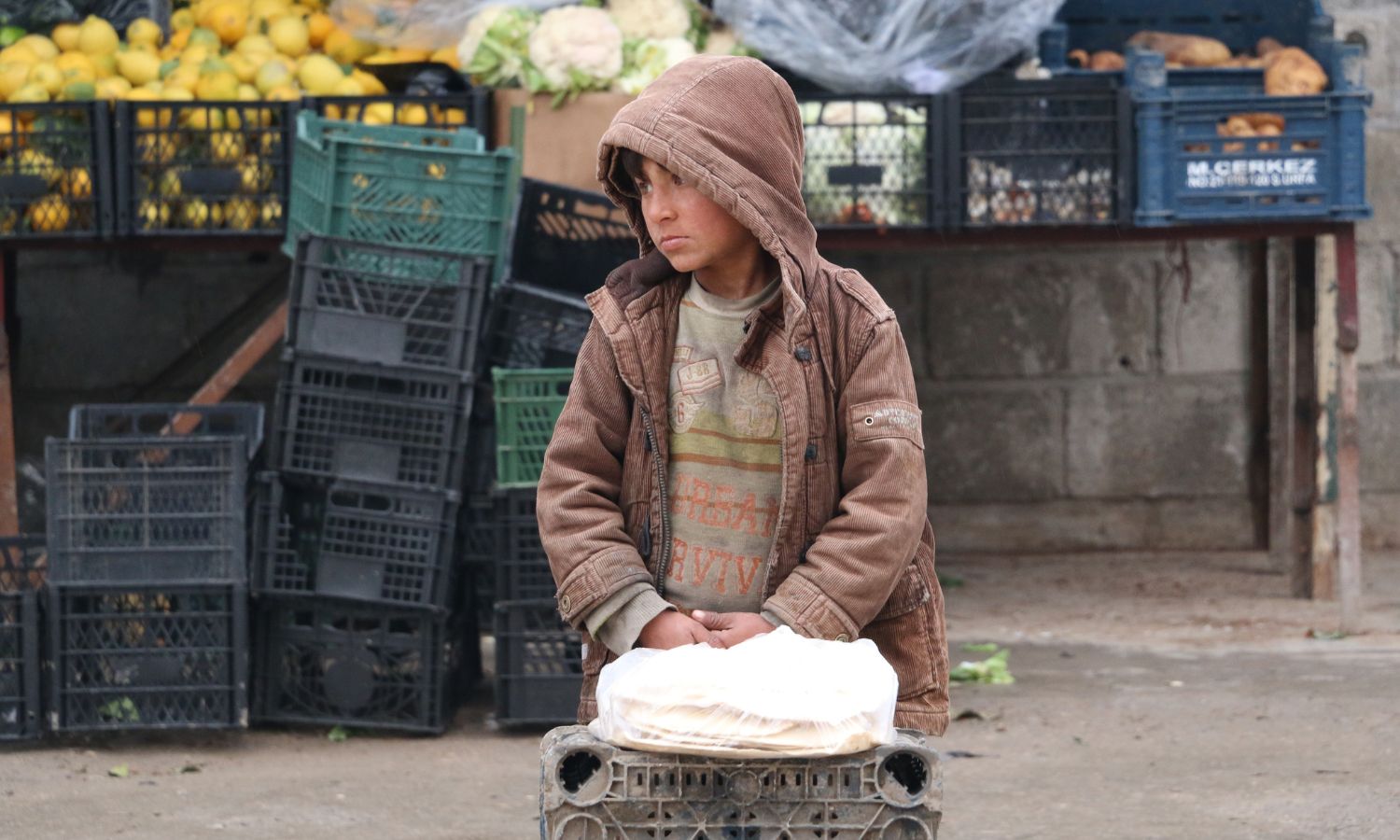
Deteriorating economic conditions have pushed children away from schools in the city of Ras al-Ain in northwestern al-Hasakah – January 16, 2024 (Enab Baladi)
Areas under regime government control
Education “a mere formality”
Despite some minor differences, the education sector is in a deteriorating state in government-controlled areas in Syria. The suffering includes staff and infrastructure, as public schools face ongoing crises, shortages in supplies, heating fuel, textbooks, and low teachers’ salaries.
For years, the start of the academic year has become a financial burden and economic nightmare for families. This year, school supplies prices have risen by over 100% compared to 2023, while the minimum salary is only 279,000 Syrian pounds (about $18).
Regime-controlled areas also witness student dropouts, which amounted to 4.28% of the total number of students during the 2022-2023 academic year, and 3.98% during the 2021-2022 academic year, according to the local Al-Watan newspaper quoting the Ministry of Education.
According to Syrian laws, textbooks are free for elementary school students from the first grade to the ninth grade, while high school students must purchase them. However, delivering damaged and used books to students has become a common annual occurrence, forcing families to buy books from bookstores and the black market.
The problem also lies in the fact that using recycled books will not benefit the student, as per the new curricula; students should solve their homework in the book that contains their questions and solutions.
On September 9, the General Director of the Public Printing Corporation, Fahmi al-Akhal, stated that 13.7 million books were printed for this year, achieving a completion rate of 90%. He noted that the percentage of new books ranges between 50-60%, while the recycled books represent about 40-50% depending on the nature of each governorate, school, and subject.
A retired teacher in Latakia told Enab Baladi that the obstacles to students’ education today are not limited to poor infrastructure, damaged books, and low teachers’ salaries but have stemmed from the presence of unqualified individuals in teaching positions for years. Most teachers now focus on providing private lessons to secure financial returns, and teaching in schools has become “a mere formality.”
Illiterate generation
Classrooms are overcrowded, with some classes reaching around 40 to 45 students, making it difficult for teachers to convey information to everyone and ensure their comprehension, as each student has a different level of comprehension.
A teacher in the city of Jableh pointed out that some parents are preoccupied with life’s struggles and managing living expenses, neglecting their children’s education, believing that their children only need to master basic reading, writing, and math before entering the workforce to support the family.
Despite the lack of precise statistics on child labor, the teacher mentioned that dozens of children at least in one school work after class. Many students have dropped out after the sixth or seventh grade, turning to exhausting and strenuous jobs in repair work and markets.
Amid these circumstances, and with the continuation of years of conflict, the number of school dropouts has increased, reaching 22% of the total number of students in compulsory education in areas controlled by the Syrian regime government by the end of 2022.
Former Minister of Education, Darem Tabaa, stated that the ministry has taken several measures to reduce dropout rates, including encouraging students to follow the “curriculum B” system, which shortens two school years into one, and offering a monthly food basket worth about 75,000 Syrian pounds.
He added that the ministry aims to bring back one million dropouts to school, and by that date, the ministry has managed to attract 160,000 students.
According to estimates from teachers and administrators interviewed by Enab Baladi, the dropout rate has increased, especially with the decline of the Syrian pound against foreign currencies (the value of the US dollar equals 15,000 Syrian pounds) and the worsening living conditions of the population in Syria, with the number of individuals in need of humanitarian assistance in Syria rising to 16.7 million people.
An educational supervisor in Homs, central Syria, told Enab Baladi that the dropout phenomenon has worsened over the years, becoming uncontrollable, with work or thoughts of traveling serving as a forced solution for students and their families to confront “extreme poverty.” He noted that the continued drop-out poses a warning of an “illiterate generation.”
Teacher Khaled al-Mousa, residing in the western countryside of Daraa, said in an interview with Enab Baladi that several obstacles have led to the decline in education levels, contributing to an increase in dropout cases and halting students’ educational journeys, primarily due to the continuous changes in curricula, the lack of qualified teaching staff, the absence of experienced faculty, and resorting to newly graduated or university student teachers.
Al-Mousa mentioned that middle and high schools in the town of Muzayrib in the Daraa countryside are without mathematics and physics teachers, forcing students to take expensive private lessons that strain families financially, and compelling some to drop out in search of work. Some even come to exams without studying, leading to student failure.
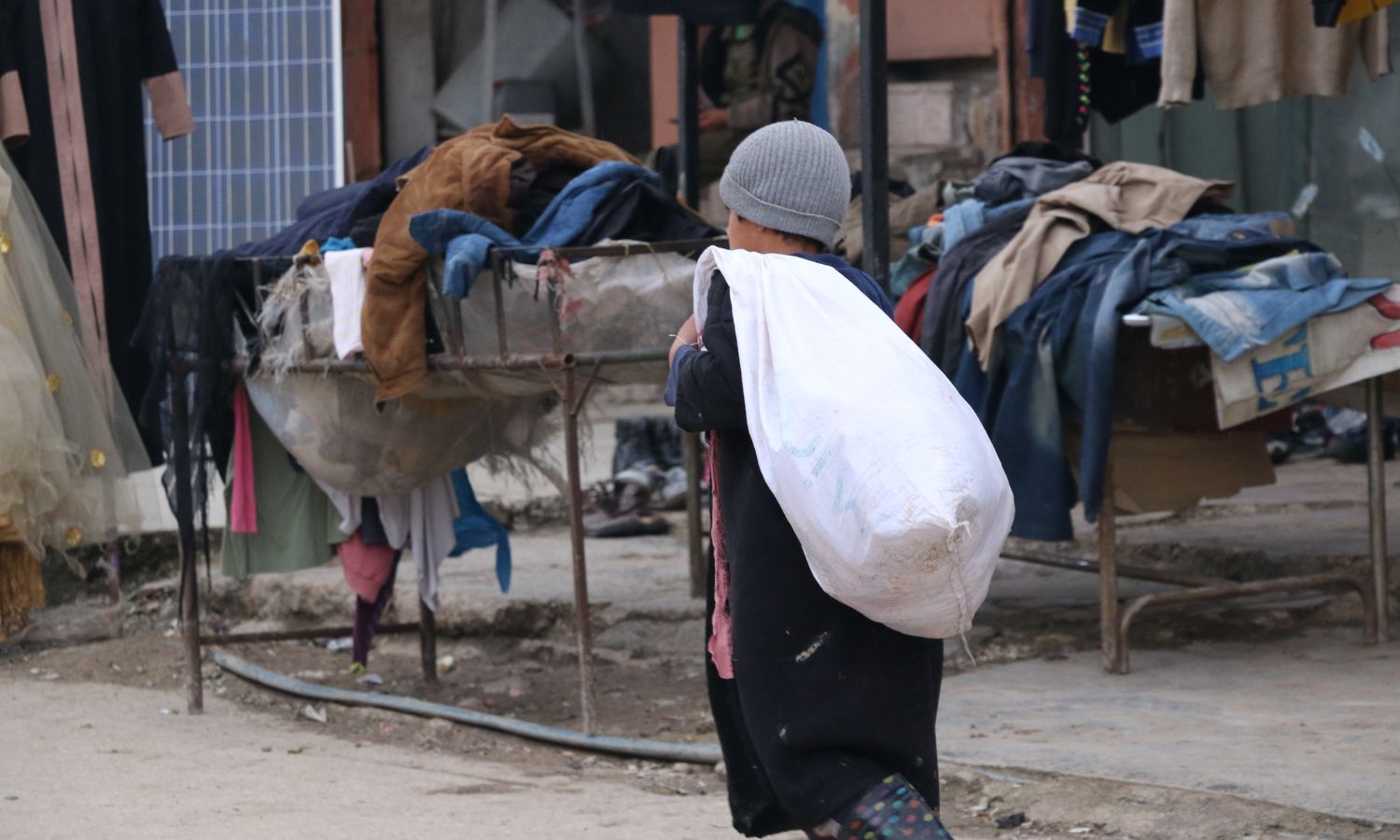
Deteriorating economic conditions have pushed children away from schools in the city of Ras al-Ain in northwestern al-Hasakah – January 16, 2024 (Enab Baladi)
Solutions
Researcher Hala Hajj Ali from the Omaran Center for Strategic Studies proposed several recommendations to improve the educational situation in northwestern Syria in her study titled “Post-War Generation Needs.. Educational Gaps in Northwest Syria as a Model.”
The most notable points include:
- Conducting advocacy campaigns targeting the needs assessment process, supporting the establishment of a specific mechanism for assessing school needs, and enhancing Syrian funding channels for educational processes.
- Strengthening local roles in overseeing the educational process to ensure that administrative decisions align with the Syrian context and its particularities.
- Opening multiple channels for coordination among actors.
- Supporting the presence of advisory bodies for the educational process.
- Officially framing the needs assessment process, ensuring it isn’t solely based on the estimations of organizations.
According to a research paper on education in al-Hasakah province, researcher Samer al-Ahmad specialized in northeastern Syrian affairs, affirmed that the educational reality in the province is highly complex and threatens a crisis for the upcoming generation due to student dropouts, which threaten to raise illiteracy rates, increase child labor, promote early marriage, and politicize an entire generation.
The researcher proposed several recommendations:
- Educational projects should support efforts aimed at unifying educational curricula while establishing standards accommodating human rights culture and cultural diversity among communities.
- Prioritizing early recovery programs and later in reconstruction programs for rehabilitating schools and educational facilities.
- Focusing assistance programs on the educational situation in Syria, providing logistical and programmatic support.
- Encouraging actors in the region to view education as a foundational step toward achieving societal cohesion, free from political indoctrination.
- Authorities should adhere to the global Convention on the Rights of the Child, aligning with the UN’s 2030 Sustainable Development Goals, committing to providing quality, equitable, and inclusive education at all levels, ensuring that existing curricula respect human rights culture, women’s rights, and the rights of religious, linguistic, and ethnic components.
- Active countries in Syria should pressure the Syrian government to agree to negotiations sponsored by UN agencies to establish standards for curriculum unification.
In areas controlled by the regime government, a study prepared by the Harmoon Center for Contemporary Studies regarding “Pre-University Education in Syria” concluded that there is a need to identify educational process determinants and stability to uplift it, establishing a new and modern educational system.
Investment in education must begin by addressing weaknesses and investing in human capital as the primary driver and tool for reviving Syrian society.
Crisis fuels war
School dropout or the inability to enroll will directly lead to children being subjected to the harshest forms of exploitation in the labor market, rendering them fertile ground for drug trafficking, organ trade, and the sex trade, as well as subjecting them to kidnapping and trafficking.
They will fall to the bottom of the social ladder, where values become a fundamental pillar in their proper upbringing, outside the realm of social obligations that are a necessary condition for social integration, and a decisive factor in family formation and its continuation.
A vast mass of people characterized by knowledge and social illiteracy will be raised based on street values, organized crime, and brutality in seizing opportunities and fulfilling the most basic needs, making them fertile ground for all kinds of crime, including fighting, killing, theft, and rape.
They will directly contribute to the collapse of family structures that have already suffered various disasters, becoming both the victim and the perpetrator of crimes due to overwhelming violence.
As for the teachers, the main issue is that those teachers who have not found employment opportunities in education seek jobs outside their field, away from their profession and expertise, in pursuit of a livelihood after this significant dropout and the inability of supporting institutions to provide their basic financial needs.
This will destroy the educational staff in the foreseeable future, and this already limited environment will lose any new sources, as universities and institutes will stop providing, training, and preparing them for this challenging task.
The alternative, as has happened multiple times, will be the prevalence of informal education dominated by institutions or factions with a religious or factional character, producing limited-vision individuals, often distorting concepts and ideas, exacerbating misery among a generation divided between streets and their dark corners filled with corruption and sectarian factional education that reshapes them in a way that fuels ongoing wars and competing interests.
if you think the article contain wrong information or you have additional details Send Correction
النسخة العربية من المقال
-
Follow us :
Most viewed
- Printing Syrian currency in Europe... A file on the table
- Complex steps to establish new Syrian army
- National Security Council in Syria: A necessity imposed by reality
- SDF-Damascus agreement in Aleppo: A test balloon for broader consensus
- Why establishing a ministry of emergencies and disasters in Syria is crucial












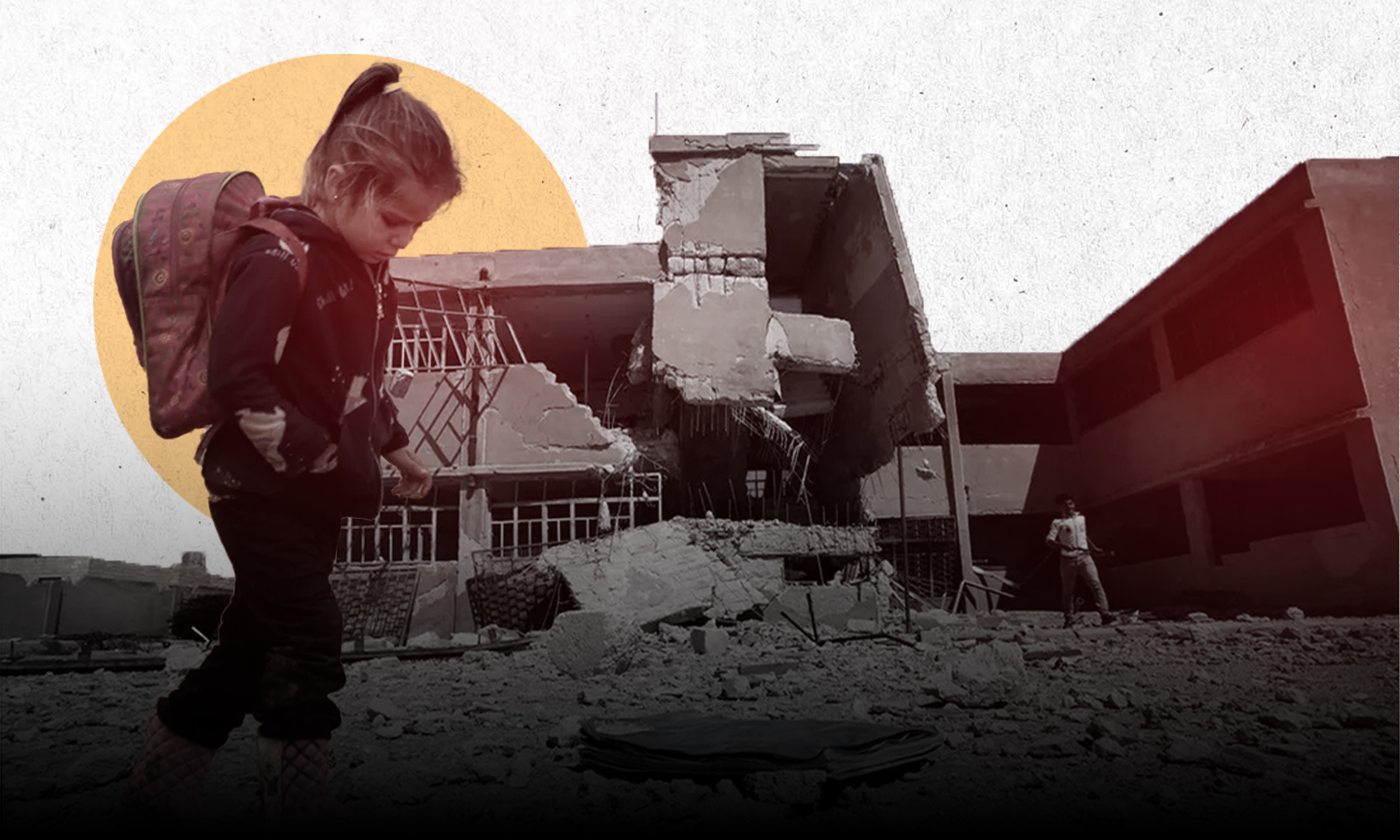
 2.4 million children out of school threaten a generation of illiterates in Syria (Enab Baladi)
2.4 million children out of school threaten a generation of illiterates in Syria (Enab Baladi)





 A
A
A
A
A
A
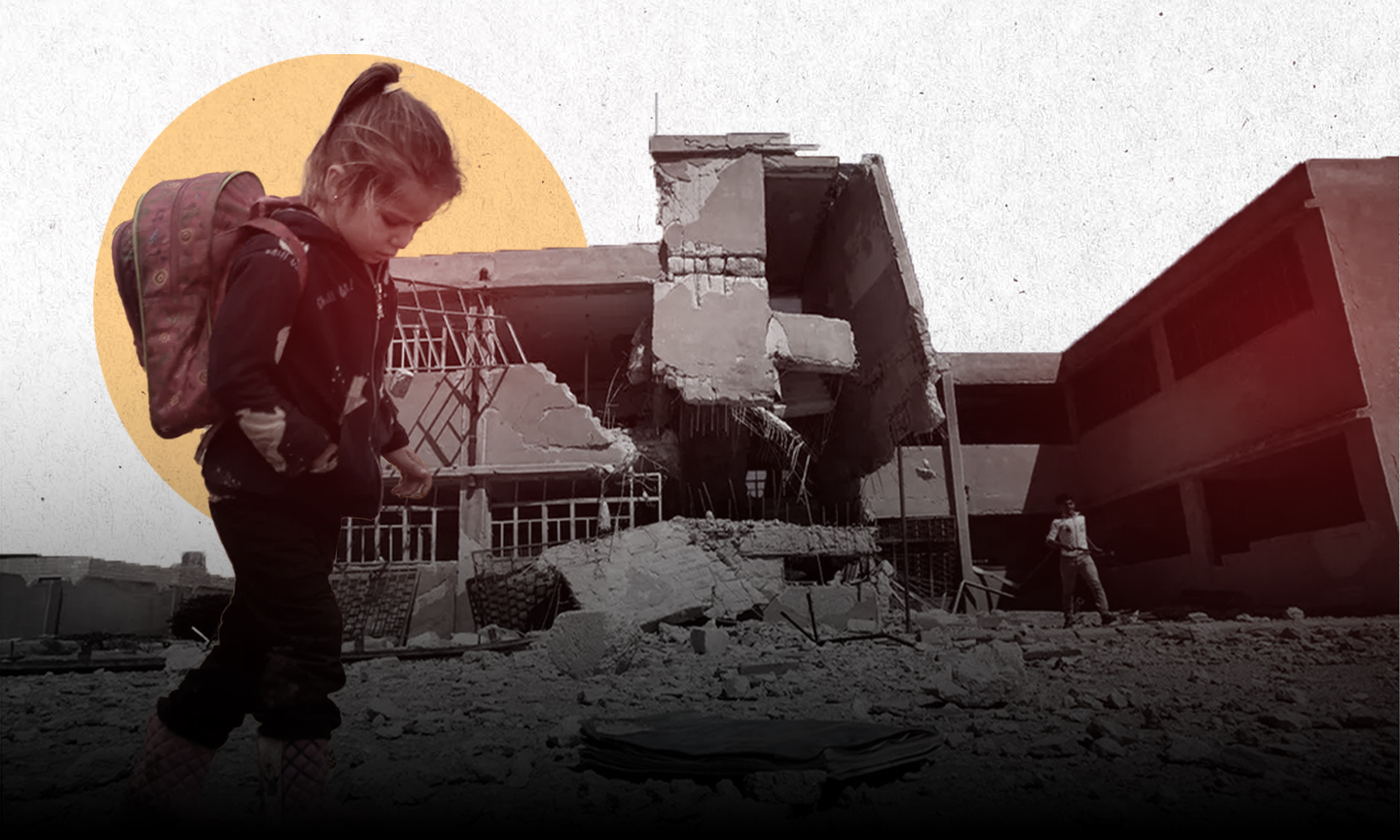







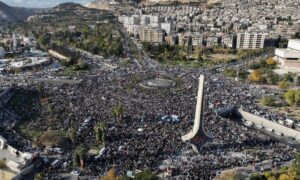
 More In-Depth
More In-Depth